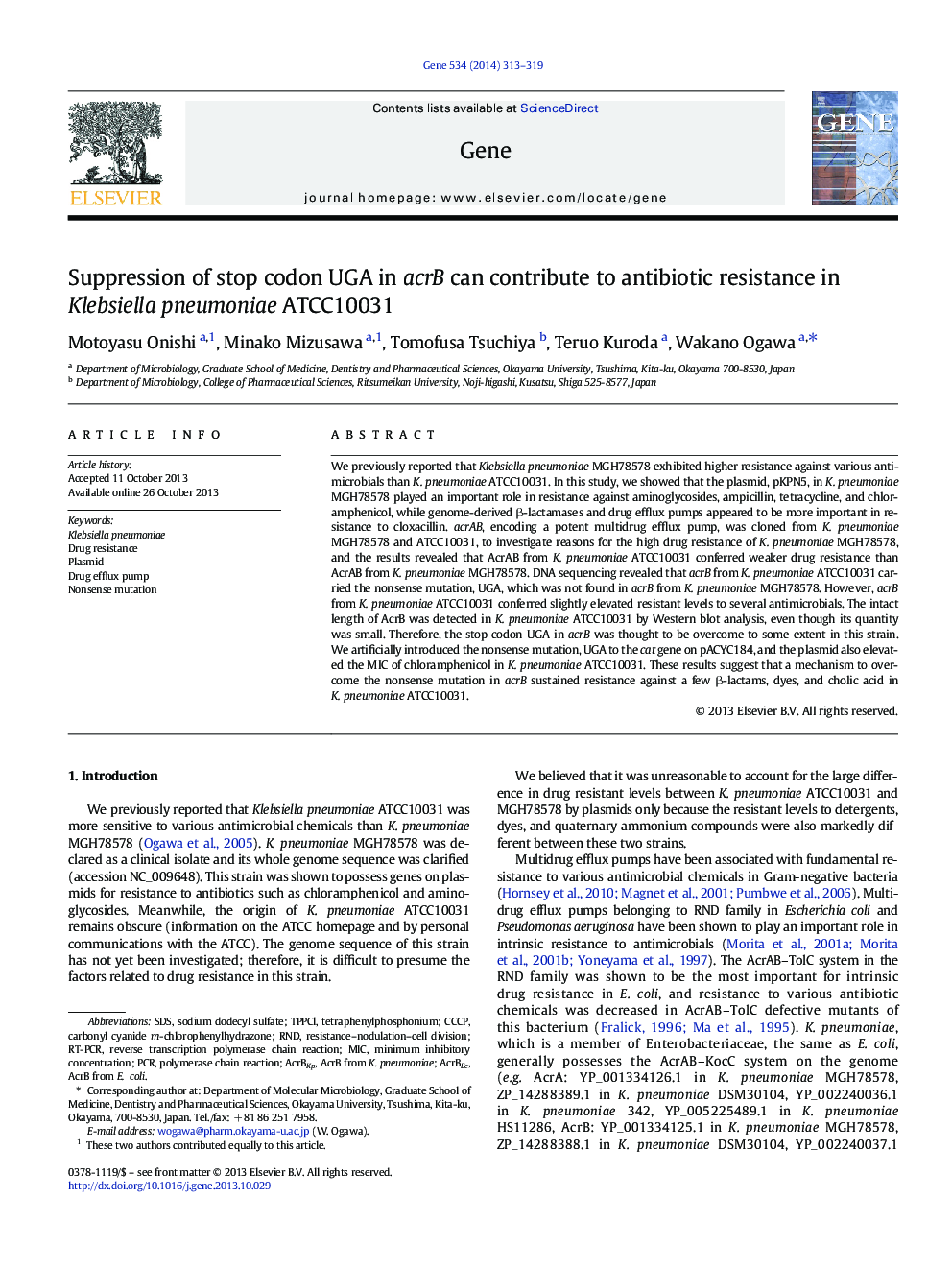| Article ID | Journal | Published Year | Pages | File Type |
|---|---|---|---|---|
| 5906018 | Gene | 2014 | 7 Pages |
Abstract
We previously reported that Klebsiella pneumoniae MGH78578 exhibited higher resistance against various antimicrobials than K. pneumoniae ATCC10031. In this study, we showed that the plasmid, pKPN5, in K. pneumoniae MGH78578 played an important role in resistance against aminoglycosides, ampicillin, tetracycline, and chloramphenicol, while genome-derived β-lactamases and drug efflux pumps appeared to be more important in resistance to cloxacillin. acrAB, encoding a potent multidrug efflux pump, was cloned from K. pneumoniae MGH78578 and ATCC10031, to investigate reasons for the high drug resistance of K. pneumoniae MGH78578, and the results revealed that AcrAB from K. pneumoniae ATCC10031 conferred weaker drug resistance than AcrAB from K. pneumoniae MGH78578. DNA sequencing revealed that acrB from K. pneumoniae ATCC10031 carried the nonsense mutation, UGA, which was not found in acrB from K. pneumoniae MGH78578. However, acrB from K. pneumoniae ATCC10031 conferred slightly elevated resistant levels to several antimicrobials. The intact length of AcrB was detected in K. pneumoniae ATCC10031 by Western blot analysis, even though its quantity was small. Therefore, the stop codon UGA in acrB was thought to be overcome to some extent in this strain. We artificially introduced the nonsense mutation, UGA to the cat gene on pACYC184, and the plasmid also elevated the MIC of chloramphenicol in K. pneumoniae ATCC10031. These results suggest that a mechanism to overcome the nonsense mutation in acrB sustained resistance against a few β-lactams, dyes, and cholic acid in K. pneumoniae ATCC10031.
Keywords
Related Topics
Life Sciences
Biochemistry, Genetics and Molecular Biology
Genetics
Authors
Motoyasu Onishi, Minako Mizusawa, Tomofusa Tsuchiya, Teruo Kuroda, Wakano Ogawa,
